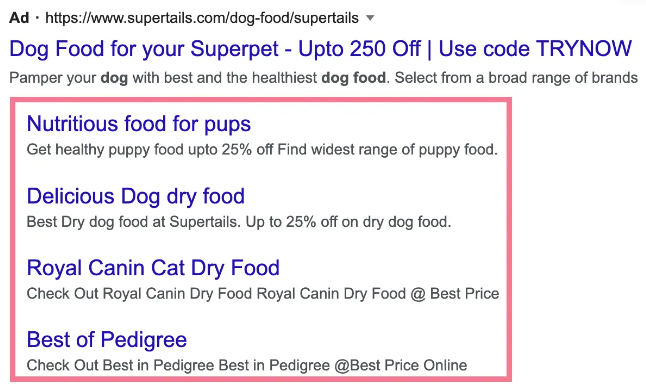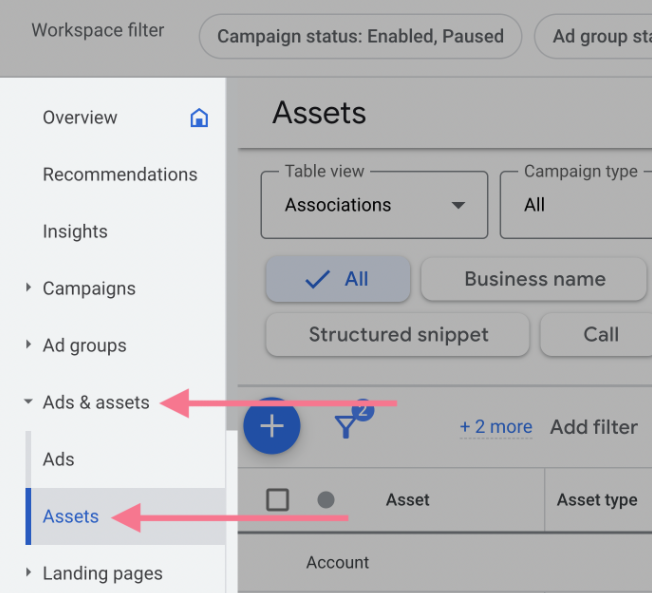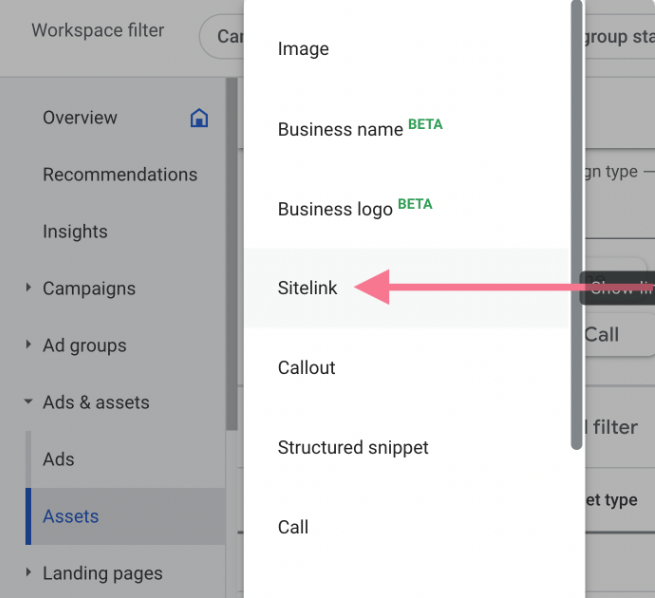We’ve talked a lot about Google Ad extensions at Fujisan — today, we’re gonna dive into sitelink extensions.
Sitelinks are a type of extension that create additional links you can include in your PPC ads. For example, if a user falls upon a sitelink on your PPC ad and clicks on it, they will be taken to a specific part of your website.
Let’s dive in:
More about sitelinks, identifying them, and why to use them
Sitelinks appear as additional links on your Google ad right below your description text. Typically, they’ll appear when your ad is shown in the top positions on the SERP (as shown below).
Image Source: semrush.com
Additionally, they can appear as smaller, more compact links underneath your ad. Those types of sitelinks look like so:
Image Source: semrush.com
These extensions display other useful information on your ads beyond just the primary link, allowing you to promote different products, services, and sections of your site to customers. All of this gives users more ways to navigate your site and explore more of what you have to offer.
Furthermore, through this process they make your ads take up more real estate on the SERP — which is always a good thing.
The benefits of sitelinks are numerous and compounding. These include the above, but to elaborate, they:
- More prominently feature you on the SERP by taking up more real estate and also squeezing out competitors — all without paying extra.
- Provide users with more options about engaging with which of your pages is most interesting to them.
- Allow you to highlight multiple outstanding products, offers, services, and pages instead of having to neglect all but one.
Through extension, these result in:
- Improved click-through rate and overall performance by giving users more interesting choices.
- Improved conversion rate by removing barriers to navigation and subsequently making it easier for users to navigate to what it is they’re most interested in.
As is intuitive, sitelink extensions don’t appear like a particularly dramatic change but have multiple positive impacts, all of which build on each other to be quite helpful altogether.
Adding sitelink extensions in Google Ads
Setting up sitelinks is, luckily, a pretty simple process.
First, in your PPC account, you’ll click on “Ads & Assets” on the left-hand menu and select “Assets.”
Image Source: semrush.com
Then you’ll be presented by Google with all available ad extensions (also called “assets”). Here you’ll select “Sitelink.”
Image Source: semrush.com
Click the blue plus icon to add multiple sitelinks. You’ll include specific URL tracking parameters and/or dates and times that you’d like the sitelinks to appear.
And you’re in! Which brings us to…
Tips for getting the most out of your Google sitelinks
As you get more used to your own sitelinks, you’ll naturally discover on your own certain ways to adjust and adapt to improve your results. To begin with though, here are four tips that can help give you a pretty good starting point.
1) Sitelinks can serve multiple purposes — make sure you’re using a variety of them. Don’t get too myopic and box yourself in by focusing too much on one particular type and ignoring the rest. For example, you could use multiple sitelinks wherein one promotes an on-sale product, one highlights a new product category, and one directs prospective clients to useful introductory information.
2) Track sitelink performance and adjust from there. Yeah, same as everything we talk about no matter the specifics — don’t just set and forget. Check up on your sitelinks and see which are getting traction and which are not. Obviously, not all of them will perform equally given the uncontrolled nature of their type and objective and that’s totally okay, but you should still keep an eye out for any negative outliers and adapt.
3) Make sure each sitelink has an appropriate landing page! In your haste, it can be a bit too easy to forget this, but it’s critical you’re sending users to a page relevant to that which the sitelink is offering. Otherwise, sending them to a generic page on your site is just undoing the benefits that sitelinks offer. The landing page they arrive on should tightly correlate with the context of the sitelink.
4) Use enhanced sitelinks. These allow you to add two links of description text per link. In doing so, they give you the chance to write more compelling and informative copy — and not to mention, taking up even more SERP real estate.
Lastly, you might end up noticing that you’ve enabled sitelinks but aren’t seeing them appear.
Here you should know that just because you’ve done all the steps and created your sitelink extensions, it doesn’t necessarily mean they’ll always be served alongside your ads. Extensions are served at Google’s discretion; as the advertiser, you can’t control which of your extensions are displayed for any given user’s search — instead, Google uses a formula that aims to in theory show the “best” options for a user’s needs based on the context of their search, history, and more.
This means if Google deems your sitelink extensions as not optimal for a given user’s search, they won’t be shown alongside your ad in this instance.
That being said, we do know that Google is more likely to display extensions for ads when they appear in higher-up positions on the SERP. On the flip side, we know the amount of your extensions served decreases as your SERP position decreases too.
So, with that in mind, one of the most important steps you can take to ensure your sitelink extensions are served is to prioritize the other ad optimizations that will give your ads the best chance at being served in top positions. Now by doing so, you’re killing two birds with one stone!
As you can see, sitelink extensions are a super useful tool when trying to effectively advertise your business to those users who could benefit from and be interested in your services. There are many other extensions you can couple with sitelinks to build on each other — this includes the call extension, location extension, callout extension, and lead forms, among many others. These can allow users to call you directly from the ad, show your address, and promote unique offers, plus lots more.
When it comes to optimizing your account, sitelinks and other relevant extensions are quite easy and really helpful. They improve not just traffic, but engagement and conversions because you’re making it easier for users to discover what they want from you. All in all, they’re a no-brainer.








